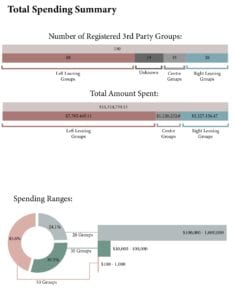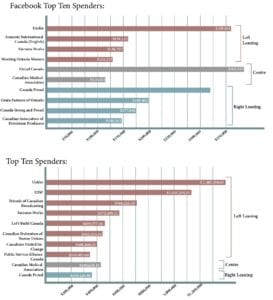Our crack team of researchers have been at it again, this time compiling a report laying out the financial returns of third parties during Canada's most recent federal election last year.
The 2019 Canadian federal election (formally the 43rd Canadian general election) was held on October 21, 2019, to elect members of the House of Commons to the 43rd Canadian Parliament. The writs of election for the 2019 election were issued by Governor General Julie Payette on September 11, 2019.
The Liberal Party, led by incumbent Prime Minister Justin Trudeau, won 157 seats to form a minority government and lost the majority they had won in the 2015 election. The Liberals lost the popular vote to the Conservatives, which marks only the second time in Canadian history that a governing party formed a government while receiving less than 35 per cent of the national popular vote. The Liberals received the lowest percentage of the national popular vote of a governing party in Canadian history.
Elections Canada defines a third party as "a person or group that wants to participate in or influence elections other than as a political party, electoral district association, nomination contestant or candidate." Any third party that wishes to engage in regulated activities (which includes most public partisan activities, like advertising or promoting a candidate or party) during the pre-election or election periods is required by law to register with the Federal Government once it incurs more than $500.00 in expenses. That registration includes declaring where that money is going, and following that money trail -- be it in greenbacks, loonies, or pounds sterling -- is a central part of our project here at The Pipeline.
Of the top ten spenders, eight of them are leftist groups, one (the Canadian Medical Association) a centrist, and only one -- Canada Proud ("Working to defeat Prime Minister Justin Trudeau in the 2019 federal election") -- is on the right. That adds up to $5.5 million Canadian on the left versus $360,000 on the right -- $671,000 if you add in the Canadian Association of Petroleum Producers, which comes in at number 11.
Here's the full report:
 Loading...
Loading...
And here is a break down of that spending:


Article tags: Andrew Scheer, Canada, Carbon taxes, elections, environmentalism, Erin O'Toole, follow the money, Justin Trudeau, special report